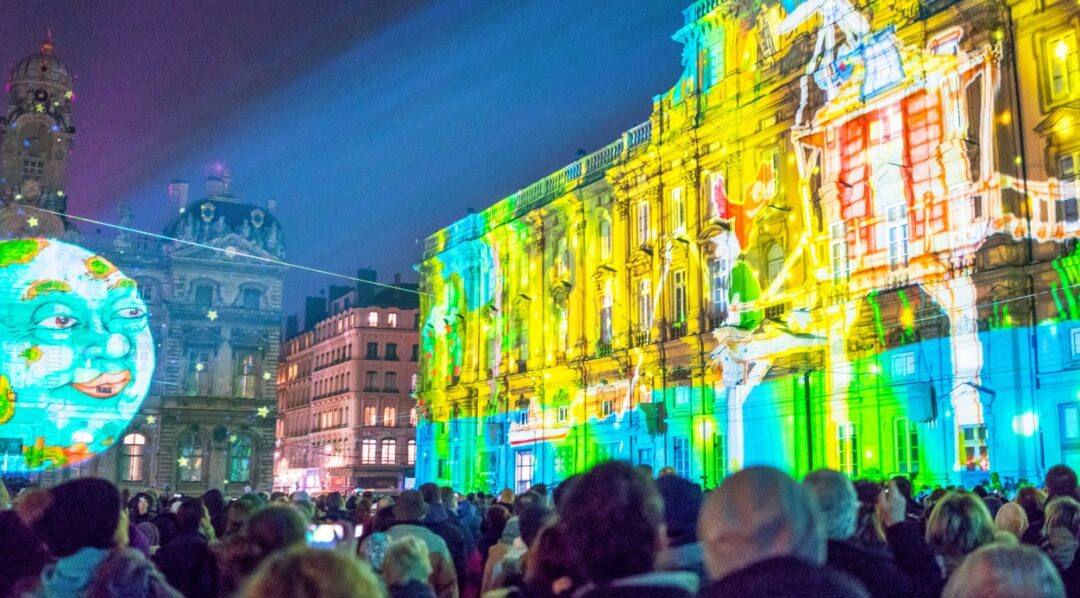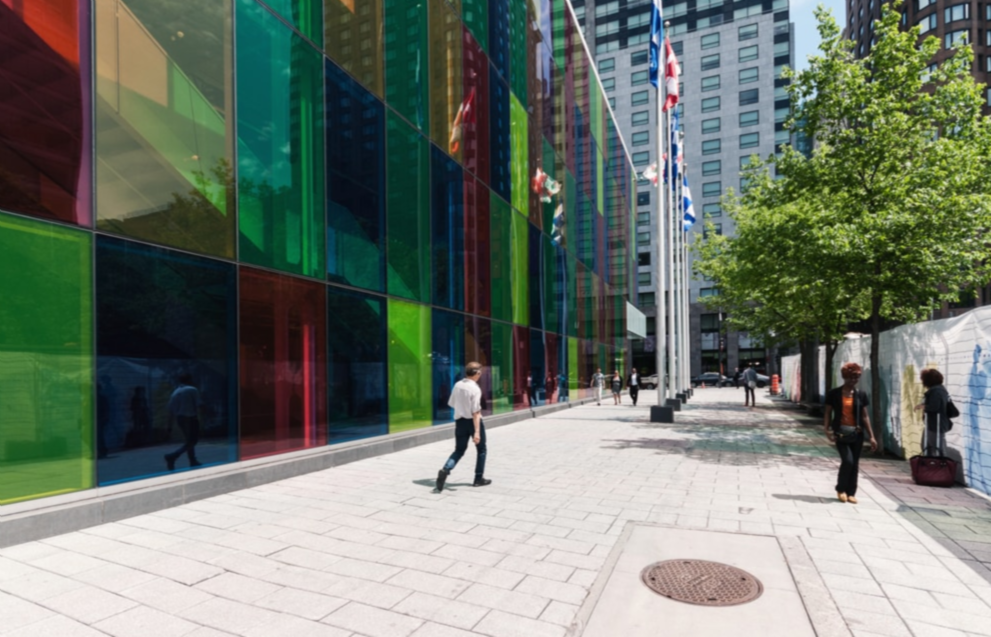
Places of worship and holy sites are soft and attractive targets for those who wish to cause harm and spread fear. How can we prevent attacks and guarantee the sanctity of religious sites and the safety of worshippers? How can we find a balance between stricter security protocols and the preservation of the open nature of these places? PACTESUR Expert Lina Kolesnikova explores the challenge of protecting places of worship in Europe.
What are the main challenges national and local authorities face in the protection of their places of worship?
Harm can be brought to places of worship and people attending them by actions posing risk to lives or the place itself. Various types of assaults include the following: verbal assaults, acts of vandalism, burglary, arson, bombings and murders.
Protecting places of worship is usually a fundamentally difficult issue. Different people are present on site for various reasons, and the site is usually organised to let all these people in and out, for all kinds of reasons. Therefore, places of worship are inherently soft and attractive targets for those who wish to cause harm and spread fear. Some of the main challenges for authorities are:
- Many of these places are open and welcoming (easily approachable and accessible).
- Buildings often stand out and they are not necessarily built with our modern understanding of safety and security in mind.
- Places of worship are not exclusively limited to worship. Often, there are other services delivered there or nearby – cultural facilities, schools and other activities for children.
- There are other buildings or places that should be covered by special security measures where the same congregation gathers (i.e. cemeteries and stores).
- People gathering in such places are public of different genders and ages, cultures and physical health conditions. They are congregations, tourists, passers-by, local workers, etc. “One-size fits all” protection measures would not work.
- Such places can be crowded, so there is often no easy chance to escape in case of emergency.
- Worshippers are not in the same psychological state during services as during their daily routine; they are vulnerable. Focused on their spiritual experience, they might react slower than in other circumstances such as when working, shopping or sightseeing.
- Solid protection can only be arranged by the local and national authorities if they are aware of the threats and events as they happen. However, some non-violent acts, such as verbal abuse or graffiti, might go unreported to the authorities (lack of communication, “us-them” thinking, bad history of previous communication or treatment).
In your opinion, what preventive measures and security protocols can be implemented while preserving the open nature of religious sites?
Worship places are soft targets. Looking at possible protection measures for such targets, I suggest the 4G approach (guards, gates, guns and guidance). It is imperative, however, to use such an approach with tact, considering that we are in a place of worship where people are sensitive to religious, spiritual and cultural matters:
- Deployment of guards to detect, alert and respond. They might be armed or unarmed, and be either from the police or regulated private security firms (vs. vigilantes). The challenge here lies in their presence being accepted by religious personnel and believers.
- Space surrounding entrances can be used to improve detection and give more time to guards and alerting mechanisms to be more efficient.
- Architecture and construction design can help too, minimizing the impact by employing elements that facilitate hiding, escape, or dispersion of attendees.
- Using detection technologies manned or unmanned:
- Fixed and hand-held scanners, random body search
- human-operated sniffer dogs
- behavioral monitoring and visual control such as CCTV.
- Whenever a high-risk situation is detected, control systems coming into play are:
- alerting mechanisms and guidance – i.e., providing information to visitors on how to behave in case of emergency.
- Regular safety requirements do apply to worship places, such as fire safety regulation, first aid kits supplies, etc. These requirements should be the same as for others comparable sites and gatherings.
What are the main challenges of using technology-enabled security solutions to protect places of worship?
Challenges related to implementing technology-enabled security solutions in places of worship are mainly of cultural nature. First of all, modern security building design might be at odds with the cultural traditions related to the places of worship. Secondly, using detection technologies (both manned or unmanned systems) such as scanners and random body search, sniffer dogs, behavioral monitoring and CCTV surveillance might be incompatible with expectations of the religious tradition, believers and places of worship, which are meant to be open and accessible to all. Thirdly, phones are prohibited in most places of worship, they have to be put on silent or turned off. Conveying up-to-date information through these gadgets is thus hampered. Finally, alerting mechanisms (alerting personnel in charge and alerting other people) work best when coupled with guidance about what to do, where to go, etc. However, personnel of places of worship lack concrete information and security-related material on how to protect worshippers against evolving threats.
There is a need to raise awareness among religious leaders and worshipers on their role in prevention. Are there any training available for priests, imams, rabbis, and other religious/faith-based leaders in Europe?
We all play a crucial role in identifying vulnerabilities and potential threats to religious sites. As I mentioned earlier, it is necessary to develop better awareness-raising material to inform religious and faith-based leaders on how to address potential threats in places of worship. While some personnel are already used to detect unusual behaviour and suspicious activity, they need better guidance on how to handle them. Another challenge is how to promote better awareness-raising material for visitors – i.e., believers and tourists, who might be of different cultures, traditions and languages, and who might have different cultural attitudes towards such guidance and security measures.
Recently, we have seen that places of worships are only mentioned in connotation with security-related issues, radicalism or terrorism. However, such places are first and foremost places of dialogue bringing communities and generations together. They are platforms for exchanging information and feedback. I believe that a fruitful relationship is when local and regional authorities talk with religious leaders about issues of safety and security and listen to what they have to say.
Certain groups within a faith community might feel more vulnerable or be exposed to greater risk than others in a place of worship. What can be done to reduce this perception at the local level?
When certain religious groups feel vulnerable in a society, there are reasons for that, which are sometimes ignored by local and/or national authorities. More often than not, the root cause is the absence of real two-way communication between state institutions and faith communities. A community can feel unwelcome and insecure in a place where they have been for decades or even sometimes centuries. Some might face discrimination or feel excluded and marginalised. Isolation and fear usually occurs in situations where law enforcement have little inclination to associate themselves with the affected community, with little empathy and a reluctance to work for justice for the victims. I want to insist that all incidents, which involve hate speech, racist remarks and actions should be considered as serious crimes.
Prejudices and stereotypes play a huge role in the perception of certain groups within a faith community. In turn, they cause profound societal damage, leading to a decline in a community itself and, consequently, the rupture of social cohesion within the local population. And this is exactly what most of the attackers want – to drive a wedge between people.
In order to reduce this perception at the local level, relevant authorities should develop clear short, medium and long term strategies and programmes, focusing not only on security (post-event activities), but also on cultural, educational and religious matters themselves (education and training of religious leaders). The local level should always be part of regional and national programmes, which crucially should be built from bottom to top, and not, as we usually see, with a top-down approach. There could be some universal proposals but again each city/town has its particular situation and every programme should be adapted to the local context, with bespoke solutions.
The opinions expressed in this publication are those of the authors. They do not purport to reflect the opinions or views of Efus.
About the author
Lina Kolesnikova is a consultant in international relations, security, risk and crisis management in Brussels, Belgium, and a member of Crisis Response Journal’s (CRJ) Advisory Panel. She is also a fellow of the Institute of Civil Protection and Emergency Management (ICPEM) and a representative of ICPEM in Europe. Since 2019, she is a member of the PACTESUR Expert Advisory Committee.
About PACTESUR
The PACTESUR project aims to empower cities and local actors in the field of security of urban public spaces facing threats, such as terrorist attacks. Through a bottom-up approach, the project federates local decision makers, security forces, urban security experts, urban planners, IT developers, trainers, front-line practitioners, designers and others in order to shape new European local policies to secure public spaces against terrorist attacks

Contact:
Tatiana Morales, Programme Manager: morales@efus.eu
Martí Navarro Regàs, Programme Manager: navarroregas@efus.eu
Marta Pellón Brussosa, PACTESUR Communication Officer: pellonbrussosa@efus.eu





